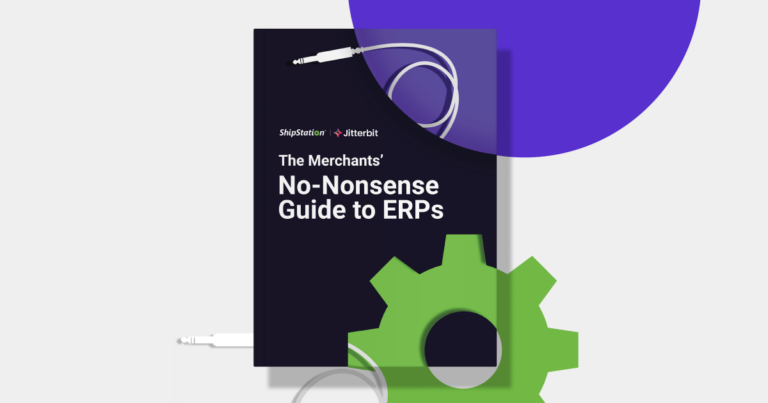Grow Your Business with Multichannel & International Sales

This post was contributed by Vera Lim, the Inbound Marketing Manager with TradeGecko, a company that provides cloud-based inventory management software for growing businesses. Vera writes for TradeGecko’s blog and knowledge base, covering topics ranging from the latest e-commerce developments to explaining how inventory management works without the jargon.
When you’re starting your business, you’re likely to start with only one retail store. This could be a physical brick-and-mortar store, a shopping cart solution like Shopify, or a marketplace like Amazon. While selling from a single store is a great way to start your business, you’ll discover that a multichannel approach will help you grow your business faster and further.
When you’re looking to broaden your customer base, multichannel sales is only the first step.
As customer expectations increase and profits grow leaner, more major retailers have started selling internationally in a bid to increase revenue. U.S. businesses sell over $1.1 trillion in goods to customers overseas in a year, but less than 1 percent of the nation’s small businesses are exporters.
With a global market left largely untapped, eCommerce and shipping services will open new opportunities to increase sales and build brand recognition on an international scale.
Multichannel sales: Appealing to different markets
By selling on multiple channels, you’ll be able to increase your sales and improve brand recognition. In order to accomplish this, knowing the benefits of different sales channels and the markets they cater to can help you to decide on the next steps for your business.
If you have a unique product and you’re looking to get it out there, you may want to try eCommerce marketplaces like Amazon, eBay, or Etsy to increase your sales. These eCommerce marketplaces enjoy high levels of customer traffic, as millions of customers turn to marketplaces for their shopping needs.
However, selling on a marketplace reduces your opportunity for brand building. You’ll be selling under the marketplace’s brand umbrella, and will be subjected to its listing policies.
On the other hand, a shopping cart solution offers you the opportunity to improve brand recognition, as you’ll be able to customize everything about your store to match your brand. Shopping cart platforms cover a range of pricing plans to suit your business, along with easy-to-use interfaces and secure payment gateways.
Ideally, you want to be selling on at least two channels (a marketplace and a shopping cart solution) to maximize your customer outreach. However, multichannel selling usually means you’ll have to separate your inventory into different channels. Once you’ve sold out on one channel, you can’t simply draw from inventory reserved for another channel to meet the demand on the first channel.
If you do that, you’re running the risk of overselling and disappointing customers, while leaving your inventory levels in a tangled mess.
When selling on multiple channels, you want to have inventory management software like TradeGecko when it comes to managing your inventory across all sales channels. With inventory management software, you can update your products directly in the system. The information is then pushed to all your eCommerce channels through the appropriate integrations, so your online stores all reflect the latest product details, available products, and stock on hand for each item. With every sale, stock levels across all channels will be updated immediately.
International sales: Take your brand global
After building a solid customer base in your home country, the next step would be looking into expanding internationally to increase sales. In spite of this, many small businesses still perceive international sales as risky, due to a lack of knowledge about international markets and unfamiliarity with customs regulations.
However, with the right market research, selling internationally gives you the chance to take your brand global, especially with the rise of eCommerce. As seen above, eCommerce makes it possible for independent brands to compete with major retailers, as setting up an eCommerce store doesn’t require a high level of technological expertise.
For a start, you can treat your international customers like an extension of your domestic customers. Put up a banner on your homepage announcing that your business is willing to ship internationally. Unlike domestic orders, there isn’t a pressing need to offer free shipping to stay competitive (although that’s also a great way of getting international customers interested in your brand).
But there’s still the matter of figuring out how to ship overseas and to learn about foreign customs, taxes, duties.
And that’s where shipping software comes into play. With shipping software to take care of your fulfillment needs, you’ll be able to focus on growing your business.
International shipping becomes easier when you have shipping software like ShipStation, which can generate customs forms and submit these automatically to your carrier. ShipStation can also automatically populate the necessary fields, such as the items’ description and values. When it’s time to send your orders out, all you have to do is to print the labels and mail these out like you would for a domestic order.
While most international customers are aware of additional costs like duties, taxes, and customs clearance fees, it’s up to the seller (you) to decide who pays for these. ShipStation offers a feature “Bill Taxes and Duties to Payor of Shipping Charges”, which lets you pay the tax and duties on behalf of your international customers. Doing this provides you with a great marketing opportunity for absorbing these costs will save your customer from additional charges.
Alternatively, you can collect all shipping fees, duties, and taxes on the checkout page of your eCommerce shop. By opting for the Delivered Duty Paid (DPP) option, your customers will know exactly how much international shipping will cost. Being transparent about shipping costs can save you from customers balking when they’re confronted with hefty tax fees accompanying their international purchase.
Moving towards the future
With the help of TradeGecko on the inventory management front and ShipStation on the shipping front, it’s time to start selling internationally on multiple channels. As Amazon and Alibaba start investing in international logistics to improve order fulfillment, it’s time to take advantage of an increasingly international eCommerce landscape to increase sales and build brand recognition.
Sign up for a free 30-day trial


